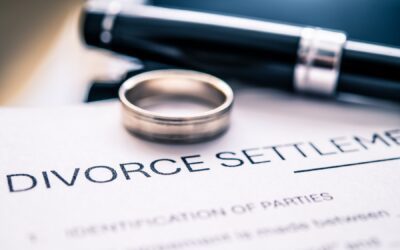When Gifting To Save Estate Taxes, It Is Essential To Consider Loss Of Step-Up In Basis
When the House Ways and Means Committee proposed reducing the estate and gift tax exemption from $11,700,000 to approximately $6,000,000 (as adjusted for inflation) effective January 1, 2022, there was a rush by many wealthy individuals to make gifts by utilizing the $11,700,000 exemption while it is still available. Lifetime gifts reduce the amount of exemption available on death. If the exemption was reduced to $6,000,000, the estate savings resulting from gifts in excess of $6,000,000 results because the excess is not recaptured upon the donor’s death in a later year. In order to reduce estate taxes, the donor would have had to give away more than $6,000,000. As of the date of this writing, it appears almost certain that the exemption will not be reduced at this time. Nevertheless, the exemption is scheduled to be lowered to $6,000,000 effective January 1, 2026 so it is still helpful to understand the computations required to take advantage of the $11,700,000 exemption before that time.
Example 1
“A” has an $11,700,000 exemption available, never having made any gifts. “A” has $11,700,000 of assets. She has not made any gifts, so she will have a $6,000,000 exemption upon her death in 2026 or later. The estate tax on her death is $2,280,000 (i.e., ($11,700,000 – $6,000,000) x 40%).
Example 2
“A” has an $11,700,000 exemption available, never having made any gifts. “A” has $11,700,000 of assets. If “A” gives away $6,000,000 before 2026, her exemption upon her death in 2026 or later is reduced by $6,000,000 to zero and her taxable estate would be $5,700,000. Assuming a 40% tax rate, the estate tax would be $2,280,000 (i.e., $5,700,000 x 40%), the same as if “A” did not make a gift. As noted, the gift must be more than $6,000,000 to save estate taxes. See Example 3.
Example 3
“A” has an $11,700,000 exemption available never having made any gifts. “A” has $11,700,000 of assets. She makes a gift of $8,000,000 this year so she has $3,700,000 of assets left. On her death in 2026 or later her $6,000,000 exemption is reduced to zero by the prior gifts but the $2,000,000 excess over $6,000,000 is not recaptured. The taxable estate is $3,700,000 ($11,700,000 – $8,000,000) and the estate tax is $1,480,000 ($3,700,000 x 40%). Had she not made a gift, the estate tax would have been $2,280,000. See Example 1. The gift resulted in an estate tax savings of $800,000 ($2,280,000 – $1,480,000).
Example 4
“A” has an $11,700,000 exemption available never having made any gifts. “A” has $11,700,000 of assets. “A” makes a gift of $11,700,000 this year. On her death in 2026 or later, her $6,000,000 exemption is reduced to zero by the prior gifts but the excess of $5,700,000 over $6,000,000 is not recaptured and results in an estate tax savings of $2,280,000 (i.e., $5,700,000 x 40%). This is the maximum amount that can be saved by making an $11,700,000 gift (but note that future appreciation of the asset is also removed from A’s estate). If she had $20,000,000 to start with, she would have $8,300,000 left after the gift, which would be taxed at 40% when she died ($8,300,000 x 40% = $3,320,000). Had she not made the gift, her estate taxes would have been $5,600,000 ($20,000,000 – $6,000,000 x 40%). “A” has saved $2,280,000 in estate taxes.
Generally, gain on the sale of an asset is calculated by using the seller’s cost basis, or for depreciable assets, the depreciated basis. However, when a person passes away with an appreciated asset, the basis of the asset is “stepped-up” to the fair market value of the asset on the date of the decedent’s death. The estate of the decedent or beneficiary of the asset can then calculate the gain on the sale of the asset based on that stepped-up basis, often resulting in the elimination of any gain and thus tax. However, if the asset is gifted to the recipient during the donor’s life rather than on death, the recipient will receive a “carryover” tax basis from the donor and lose the possible income tax benefit of the stepped-up basis. Thus, while a lifetime gift can preserve the current available estate/gift tax exemption, such gift comes at the cost of losing the possible benefit of the step-up in basis.
Example 5
“A” has $20,000,000 of assets and an $11,700,000 exemption available in 2025. Her assets consist of Apple stock which costs $2,700,000 and is worth $11,700,000. “A” gifts the Apple stock to her children in 2025 and she dies in 2026 when it is still worth $11,700,000. This gift saves $2,280,000 in estate taxes a per Example 3. “A’s” children have a basis of $2,700,000 in the stock. If they sell it for $11,700,000, there would be a gain of $9,000,000. Assuming a capital gains tax of 30% [2], the income tax would be $2,700,000. This exceeds the estate tax savings by $420,000. The gift would get all future appreciation out of the estate. So, if “A” gifted the stock in 2025 and she died in 2031 when the Apple stock was worth $16,700,000 (having appreciated by $5,000,000), “A’s” estate would have saved $2,000,000 in estate taxes ($5,000,000 x 40%) for a total of $4,280,000 ($2,280,000 + $2,000,000). The income tax on the sale would be $5,600,000 ($16,700,000 – $2,700,000 x 30%), which is still more than the estate tax savings. [1]
Example 6
Assume the same facts as in Example 5 above except the value of the stock when “A” dies in 2026 was $10,300,000. The gift would have saved $2,280,000 in estate tax. The loss of the step-up in basis is $7,600,000 (i.e., $10,300,000 – $2,700,000) which results in an income tax on the sale of $2,280,000 (i.e., $7,600,000 x .3), the same as the estate tax savings, assuming a 30% capital gains rate. The gift is breakeven. If the stock appreciates, that will result in overall savings assuming the capital gains rate is lower than the estate tax rate. The formula to compute the value of the asset that will result in the income from the loss of the step-up in basis being equal to the estate tax savings is as follows, where V is the unknown value; and y is the estate tax savings. .3(V – basis) = y.
Example 7
In 2021, “A” gifts an asset with a basis of $2,000,000 and a value of $11,700,000, saving $2,280,000 in estate tax . The breakeven value would be:
-
- .3( V – $2,000,000) = $2,280,000
- .3V – $600,000 = $2,280,000
- .3V = $2,880,000
- V = $9,600,000
If the value of the gift is $9,600,000 on the date of death, the tax on the sale would be $2,280,000 ($9,600,000 – $2,000,000 x .3) and the gift would be “breakeven”. Of course, there are other factors to consider. Maybe the heirs will not sell the stock and it will receive a step-up on their death. Maybe excluding future appreciation from the taxable estate will offset the income tax cost.
Example 8
“A” owns Apple stock with a basis of $2,000,000 and a value of $11,700,000. The gift of $11,7000,000 will save $2,280,000 in estate taxes but will cost $2,910,000 in income tax if sold for $11,700,000 ($11,700,000 – $2,000,000 = $9,700,000 x 30%). How much would the stock have to appreciate to so that estate taxes on the excluded appreciation would equal the income tax cost? Where TV is the target value, GV is the gift value, and the estate tax rate is 40% the formula to compute the breakdown value is as follows:
-
- .4 (TV – GV) = income tax cost
- .4 (TV – $11,700,000) = $2,910,000
- .4TV – $4,680,000 = $2,910,000
- .4TV = $7,590,000
- TV = $18,975,000
If the stock appreciates to $18,975,000, the estate tax savings of $2,910,000 on the $7,275,000 (i.e., $18,975,000 – $11,700,000) of appreciation (i.e., .4 x $7,275,000 = $2,910,000) would offset the $2,910,000 of income tax based on the date of gift value. The donee would not receive a step-up on any additional appreciation but if the estate tax is higher than the income tax, there would be a net savings. If the capital gains rate is 40%, the stock would have to appreciate to $21,400,000.
The above shows that when making a gift, it is best to gift an asset whose tax basis is equal to or close to the value of the gift.
When making a gift of stock in the family business, it is possible there could be a step-down in basis if the fair market value of the gift is less than the donor’s basis. Gifts of an interest in a family business will normally be discounted by at least 35% for minority interest and lack of marketability. The lower fair market value would be used for purposes of computing loss on the sale of the property by the donee, which would reduce the amount of the loss.
The above shows that when making a gift, it is best to gift an asset whose tax basis is equal to or close to the value of the gift.
When making a gift of stock in the family business, it is possible there could be a step-down in basis if the fair market value of the gift is less than the donor’s basis. Gifts of an interest in a family business will normally be discounted by at least 35% for minority interest and lack of marketability. The lower fair market value would be used for purposes of computing loss on the sale of the property by the donee, which would reduce the amount of the loss.
Article Submitted by: Michael A. Kulzer, J.D., LL.M.
Kulzer & DiPadova, P.A.
1See Estate tax planning in 2020, it’s déjà vu all over again! Posted on July 29, 2020.
2A 30% capital gain rate is used in these examples. This represents the current 20% rate plus extra for state taxes and the NIT of 3.8%. However, actual rates for the client would have to be used in doing protections. If capital gains rates are increased to 25%, the 3.8% NIT applies, the 8.9% New Jersey tax applies, and the proposed 3% surcharge applies, the rate would be much higher. The higher the income tax rate, the more appreciation is needed to break even.







